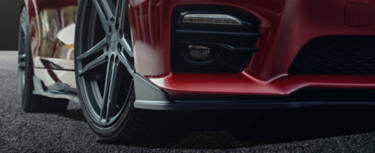Does America's Tire Do Alignments?
Not all America's Tire stores offer wheel alignment services, but more are being added all the time! If the store(s) located by you do not, many of our store managers maintain good relationships with auto repair shops in our communities and will happily provide referrals.
Need to get straightened out? See if a America's Tire store near you offers wheel alignment services.
Wheel Alignment ServiceWHAT IS A WHEEL ALIGNMENT?
A variety of factors can cause your vehicle to go out of alignment but the most common are impacts with potholes or brushing/scraping against curbs or objects. Each of these jarring blows shakes your suspension, causing it to stray from its ideal alignment settings.
However, your alignment can naturally fall out of line. Normal wear and tear cause rubber suspension components to crack, ball and socket joints to loosen and the build-up of thousands of small impacts can eventually affect your vehicle's alignment.
What else might cause your vehicle to be out of alignment? In many cases, other components, such as suspension parts, of the car can affect tire and wheel alignment. These include:
Worn springs lower ride height, altering vehicle geometry and creating misalignment
Weak springs contribute to uneven tire wear; also called "cupping"
Worn ball joints can commonly cause erratic handling, slow steering response and irregular tire wear
Worn tire rods allow tires to wander left or right, causing irregular tire wear
If you notice your vehicle pulling to the left or right, you detect irregular tire wear, or if the steering wheel is off-center when driving straight, you should have your vehicle inspected for possible alignment concerns. Alignment issues that go uncorrected will cause tires to wear down and need to be replaced prematurely.
Alignment technicians adjust four different settings to set a vehicle in alignment:
- Caster
- Camber
- Toe
- Ride height
CASTER
Caster refers to the angle of the steering axis, which is the suspension component supporting the wheel and tire assembly. You can visualize the caster as an imaginary line that runs along the vehicle's axle. The caster can be negative, centered or positive. When properly aligned, the caster contributes to steering feel and high-speed stability.
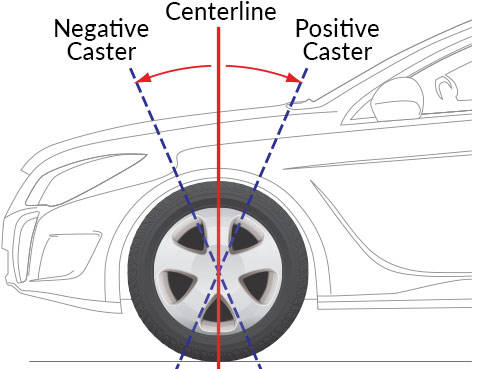
CAMBER
Camber describes the tire's inward or outward tilt, when viewed from the front of your vehicle. Negative camber refers to a tire tilted in, while positive camber refers to a tire tilted out. This adjustment can maximize the tire-to-road contact, and account for changes in force as a vehicle turns. Out of each alignment adjustment, camber has the widest range of recommended settings. This range can accommodate different vehicle handling characteristics. Higher negative camber suits those who corner aggressively, while less negative camber suits those who perform very little hard cornering.


TOE
Toe describes the relationship between a tire's front and rear end, as viewed from above. The front of the tire can be either closer or farther from each other. A front wheel drive (FWD) vehicle requires a compensating toe-out setting on the front axle since the front wheels pull toward each other as the vehicle moves. A rear-wheel drive (RWD) vehicle can have a toe-in setting on the front axle since these wheels pull away from each other during acceleration.


RIDE HEIGHT
Ride height simply refers to the distance between the road and the vehicle frame. The ride height provides reference points for all alignment measurements. Any deviation from the factory ride height, such as lifting or lowering a vehicle, will need to have an alignment check after customizations have been performed.
Be careful not to confuse wheel alignment settings like camber and toe confused with wheel offset and backspacing which are descriptions of a wheel's ideal position, ensuring it fits the vehicle appropriately without aggravating other components like fenders and brakes.
HOW TO TROUBLESHOOT TIRE WEAR PATTERNS
A tire expert can often observe wear on a tire and determine where your vehicle is out of alignment. Check out our troubleshooting guide below.
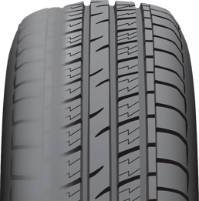
Symptom:
Premature smooth wear on inside/outside shoulder
Possible Cause:
Incorrect Camber Setting
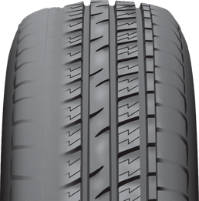
Symptom:
Excessive shoulder wear, tread blocks show "heel-toe" wear pattern
Possible Cause:
Incorrect Caster Setting

Symptom:
Sharp pulling necessitates steering compensation and feathered wear
Possible Cause:
Unequal Caster Setting (either right or left side out of specification)

Symptom:
Feathered wear across tread, raised tread block edges
Possible Cause:
Incorrect Toe Setting
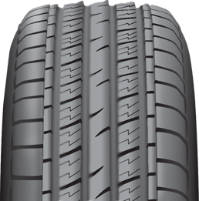
Symptom:
Sharp pulling necessitates steering compensation and feathered wear
Possible Cause:
Unequal Toe Setting (either right or left side out of specification)
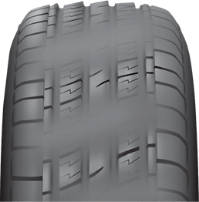
Symptom:
Irregular tread wear with feathering and smooth spots
Possible Cause:
Combination of two or more settings are out of specification
If you're seeing irregular tire treadwear, make an appointment with us to check out possible causes!
